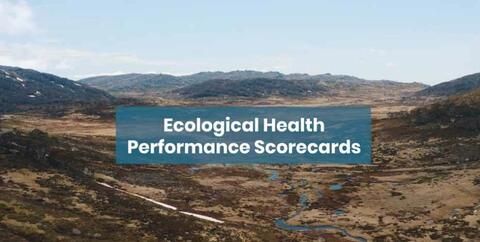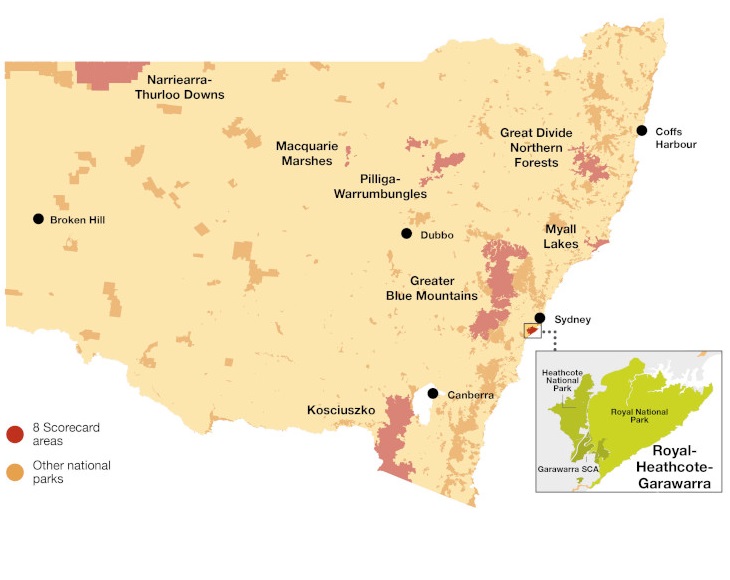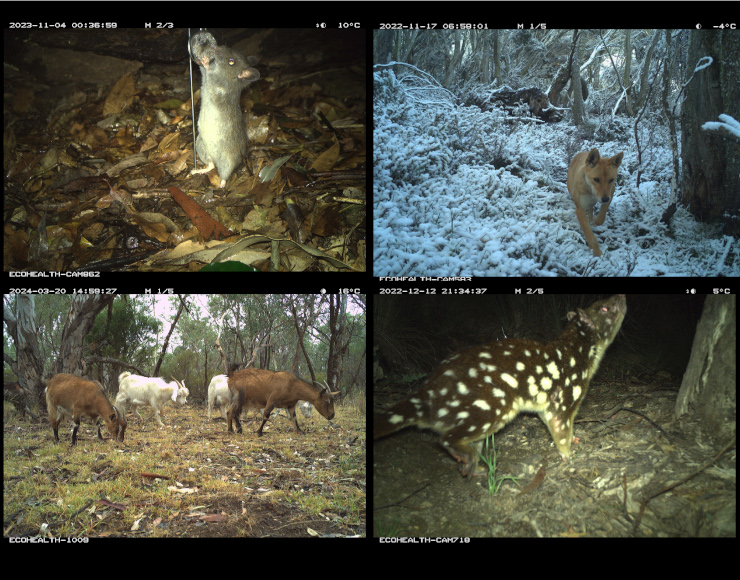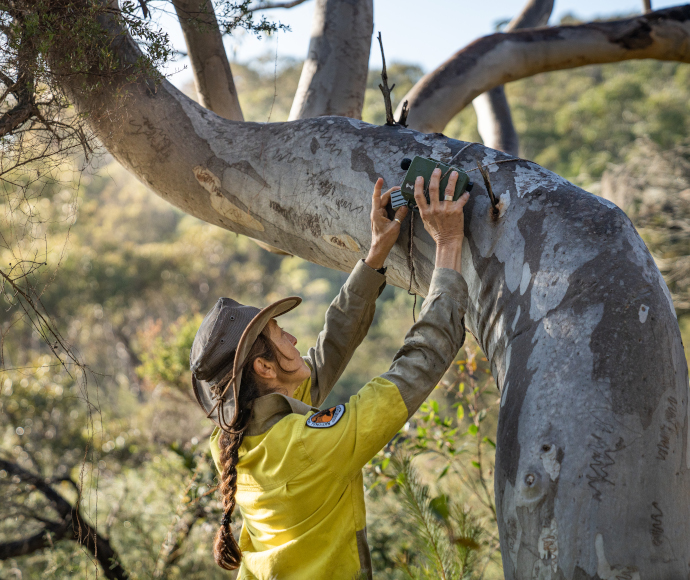The Ecological Health Performance Scorecards (Scorecards) program is a landscape-scale biodiversity monitoring program by the NSW National Parks and Wildlife Service which measures various environmental indicators to show the health of our national parks.
Monitoring includes survey techniques targeting vertebrate groups, vegetation communities and threatened ecological communities, soil and waterway condition metrics, feral animals and weeds, and fire regimes.
Monitoring takes place across the state’s national parks and data is combined with financial and management records.
This world-leading program will provide the best information on how national parks health is changing over time – whether it is improving, stable or declining.
Read the Ecological Health Performance Scorecards Q&A (PDF 162KB).
Scorecard sites
The National Parks and Wildlife Service manages more than 7 million hectares across New South Wales – from rainforest to alpine country, inland desert to the coast. The pilot program includes 8 sites from these diverse ecosystems:
- Royal–Heathcote–Garawarra
- Kosciuszko
- Myall Lakes
- Greater Blue Mountains
- Great Divide Northern Forests
- Pilliga–Warrumbungles
- Narriearra–Thurloo Downs
- Macquarie Marshes.
The first Scorecard (Royal–Heathcote–Garawarra) was published in July 2024 with the second (Kosciuszko National Park) published in November 2024.
Why Scorecards are important
Biodiversity monitoring is essential for conservation management. It helps assess conservation status, highlight causes of decline, find knowledge gaps and accurately report the condition of biodiversity and ecosystems.
The Scorecard findings will help guide park management decisions, finding the best management responses and applying them to park management activities on the ground. With this knowledge, we can focus our conservation efforts where they are most needed and effective.
No other scheme in the world combines ecological health indicators and financial data to help national park decision-makers adapt and optimise decisions based on evidence and cost-effectiveness.
Scorecards program into the future
The $10 million pilot program is the largest ever systematic survey for NSW national parks. It will run over 5 years, supported by a $7 million grant from the NSW Government through its Environmental Trust and donor investment of $1 million.
By late 2025, we will publish scorecards for all 8 national park sites on the Environment and Heritage website.
We will regularly monitor ecological health at existing program sites, and expand to other NSW national parks over time, to ensure accurate reporting on the condition of biodiversity.
Download
- Ecological Health Performance Scorecards Q&A (PDF 162KB)
- Royal–Heathcote–Garawarra Ecological Health Performance Scorecard
- Royal–Heathcote–Garawarra Ecological Health Performance Scorecard report
- Kosciuszko National Park Ecological Health Performance Scorecard
- Kosciuszko National Park Ecological Health Performance Scorecard report




